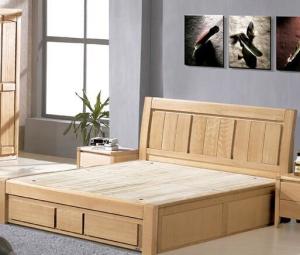1. Korean pine: light and soft, moderate strength, good dryness, water resistance, corrosion resistance, good processing, painting, coloring, cementation.
2. White pine: light and soft, elastic, fine and even structure, good dryness, water resistance, corrosion resistance, good processing, painting, coloring and cementation. The strength of white pine is higher than that of red pine.
3. Birch: slightly heavy and hard material, fine structure, high strength, good processability, finishing and gluing.
4. Paulownia: the material is very light and soft, the structure is thick, the cutting surface is not smooth, the dryness is good, and there is no warping.
5. Basswood: slightly light and soft in material, slightly fine in structure, silky luster, not easy to crack, and good in processing, painting, coloring and cementation. It is not corrosion resistant and slightly warped when dry.
6. Fraxinus mandshurica: slightly heavy and hard material, beautiful patterns, rough structure, easy processing, great toughness, good painting and gluing, and general dryness.
7. Elm: beautiful patterns, rough structure, good processability, painting and gluing, poor dryness, easy to crack and warp.
8. Oak: hard material, rough structure, high strength, difficult processing, good coloring and finishing, poor adhesion, easy to dry and crack.
9. Beech: hard material, straight texture, fine structure, wear-resistant, shiny, not easy to deform when dry, and good processing, painting and gluing properties.
10. Maple: moderate weight, fine structure, easy processing, smooth cutting surface, good painting and gluing, and warping when dry.
11. Cinnamomum camphora: moderate weight, fine structure, fragrant, not easy to deform when dry, and good processing, coating and gluing properties.
12. Willow: moderate material, slightly rough structure, easy processing, good bonding and finishing performance. Slightly cracked and warped when dry. Plywood made of willow is called Philippine board.
13. Rosewood: hard, with more texture, medium structure, corrosion resistance, not easy to dry, smooth cutting surface, good painting and bonding properties.
14. Red sandalwood (rosewood): hard material, with more texture, rough structure, strong durability, luster, and smooth cutting surface.
15. Wood based board, commonly used are plywood, five plywood, fiberboard, particleboard, hollow board, etc. Due to the different combination structures of various wood-based panels, they can overcome the shortcomings of wood expansion, shrinkage, warping, cracking, etc., so they have many advantages when used in furniture.



